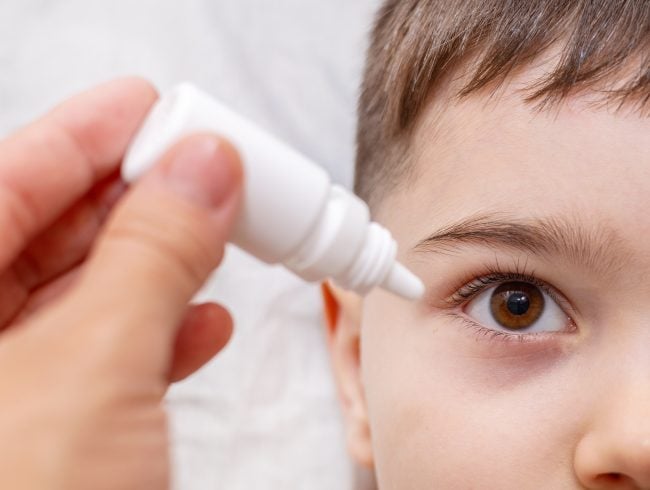
Hand-eye coordination: the right way to give eye-drop medication to your child
13 September 2023
Your child’s doctor has just prescribed eye drops for your youngster. Yes, this is prescription medication – and with it goes a number of responsibilities for you as a caring parent.
Here are some key points you need to cover before you leave the doctor’s office.
Get the facts
First of all, understand why this medication is being prescribed. And be sure you know whether it’s just for your child’s right eye or left eye, or for both eyes. As with any new medication, you will need to let the doctor know about other medicines your child is taking, and you will also need to inform the physician about any allergies your child might have. If your child wears contact lenses, find out from the doctor if you need to remove these before you administer the eye drops.
Your pharmacist can also help you out with information about possible side effects, as well as the medication’s expiration date. And don’t be shy about asking the pharmacist any questions you may have already covered with your doctor – for instance, which eye the drops go in.
Be mindful of dates
When you get home, read the instructions and any other literature that accompanies the medication. You will also want to mark the date you opened the drops. You should not use this medication after one month from the opening date. Also, do not use the drops if they change colour, or if crystals appear in the medication.
Administering drops correctly
To administer this medication, you will first need to wash your hands thoroughly and dry them.
Shake the bottle to mix the medication. Always think clean – before, during and after. When you take the cap off the bottle, place the cap on its side on a clean tissue. You’ll even want to set aside a box of tissues specifically for this eye-care medication administration. The bottle tip should remain “untouchable” – that is, it should not come into contact with your child’s eyes, your hands, or any surface for that matter.
Your child should be sitting or lying down. Ask him to tilt his head back and look at the ceiling. For a very young child, you can wrap him in a blanket to minimize arm movement.
Then hold your child’s forehead steady with one hand, and raise the child’s upper eyelid with the thumb of that hand. You’ll be multitasking with the fingers of your other hand too, as you hold the bottle with your thumb and third finger above the eye that is to receive the medication. With your bottle-hand little finger, you will pull your child’s lower eyelid down gently – this will form a pocket-like opening. Then, you will put your index finger on the bottom of the medication bottle to release the prescribed number of drops into the pocket-like opening. You may wish to practice these movements beforehand.
You will then gently release the lower eyelid while continuing to hold onto your child’s forehead; and then the upper eyelid, still holding the forehead. With your little finger, you will apply gentle pressure for about five to 10 seconds to the inside corner of the eye, beside the bridge of the nose. This prevents drops from entering the tear duct, and enables them to be absorbed into the eye.
Wait and store medication in a safe place
For optimum effectiveness, you will want to encourage your child to close his eyes gently and look up. You can also wipe away any tears with a clean tissue. Recap the eye drop medication, store it out of reach, and wash your hands again. If additional eye drop medication has been prescribed, you will need to wait five to 10 seconds after the first drops have been administered. The same waiting period goes for any eye ointment that has also been prescribed as part of the treatment.
Keep an eye on your child for side effects too, such as blurry vision. Contact your child’s physician if there are any adverse reactions or if your child’s condition worsens.
